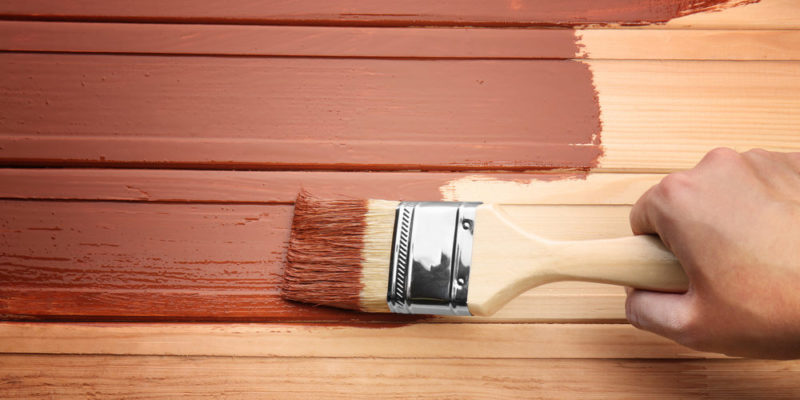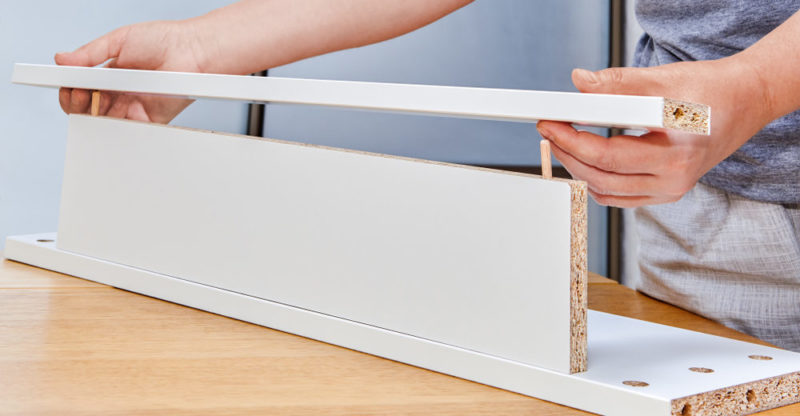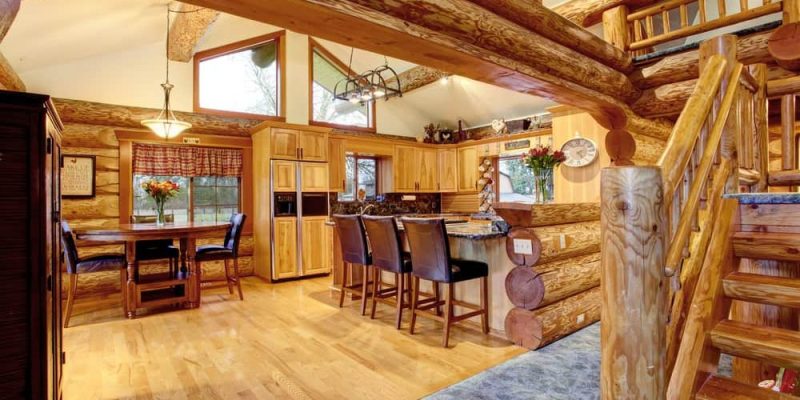We explain what wood is, its qualities and its composition. Also, its characteristics and what this material is used for.
What is wood?

Wood is a natural, flexible and resistant material with which the different types of known trees generate their trunks, growing year after year through a system of concentric and circular layers. In fact, according to their production of wood in the trunk, trees are distinguished from herbaceous plants.
There are multiple types of wood, the characteristics of which vary enormously. But in general, it is an extremely useful material for humans, who have taken advantage of it since ancient times, and also for other life forms that feed on its accumulated biomass, either during the life of the tree or after its death. and during its decomposition.
Wood is an abundant, renewable, inexpensive and easy-to-work raw material that, processed in the right way, can withstand the onslaught of time for many years.
Wood is fuel and, in addition, when it is used in construction, it gives the environment a feeling of warmth and ancestral protection, which is why it is a fundamental element in almost all human industries.
Origin of wood

As has been said, wood has an organic origin, and it first appeared on Earth millions of years ago, when plant life reigned over the continents.
Man has known it since its very origins as a species, since the first hominids were apes that descended from trees and adapted to life on the plains.
Since then he has used it to build tools, to light his fires and to build his houses.
Wood qualities

The qualities of wood can vary enormously depending on the type and the tree from which it comes, as well as the treatment that said wood has received.
However, it is broadly considered an elastic and resistant substance, which can be extremely dense or very light.
Wood is hygroscopic, capable of absorbing moisture from the air or even directly from water, and its polarity makes it receptive to substances such as varnishes, glues or paints. It is a thermal and electrical insulator, which transmits the sound .
Wood composition
Wood is composed mostly of cellulose, a polysaccharide made by plant life forms, along with other natural polymers such as lignin (25%), hemicellulose (25%) and other organic components such as resins, waxes and fats.
Its atomic composition is mostly carbon (50%) and oxygen (42%), along with hydrogen (6%) and nitrogen (2%).
Wood structure

If a trunk is observed from its exterior to its nucleus, the following structures will be found:
- External cortex: The outer layer of the tree, equivalent to the animal dermis, is made up of a rough cuticle of dead cells, which provide protection to the wood against the environment.
- Cambium: The layer following the bark, which is in turn composed of a phloem (intermediate layer close to the bark) and a xylem (the first layer of wood itself).
- Sapwood: This is the name given to the most recently formed wood and through which most of the tree's sap travels, on which many insects feed.
- Heartwood: Also called the "heart" of the wood, it is the center of the tree and is made up of physiologically inactive cells. It is much darker than sapwood, as no sap flows through it.
- Vegetable marrow: The core of the trunk itself is a flimsy substance from which the other layers are formed. It has no industrial use whatsoever.
Types of wood

There are many types of wood, according to their properties and their appearance:
- Soft woods: They come from fast-growing trees, such as conifers: poplars, willows, pines, acacias, etc. They are friendly and easy to work with, they tend to have very light colors and are the raw material for paper.
- Hard woods: They come from slow-growing, deciduous trees such as walnut or oak. They are usually oily and resistant, useful for floors, tools and furniture.
- Resinous woods: Particularly resistant to humidity, they are used for furniture and certain types of paper. They come from trees such as cedar or cypress.
- Fine woods: Those that allow a better quality finish and a more delicate work, highly demanded in art and architecture, to make musical objects or ornaments. They usually come from ebony, spruce or maple, for example.
- Prefabricated woods: Synthetic woods or woods made with wood remains, through conglomerate techniques or industrial agglutination techniques.
Uses of wood
 Wood is an extremely versatile material with which many human industries can be fed , such as:
Wood is an extremely versatile material with which many human industries can be fed , such as:
- The manufacture of furniture, tool handles, containers, cabinets, tables or chairs.
- For entire houses, stairs inside them, parquet floors, windows, blinds or complete structures (bars, dining rooms, etc.).
- The manufacture of fences, gates, country road signs, mailboxes, dog houses, bird houses, etc.
- For manufacturing ships, axles for train rails and parts of other vehicles.
- It serves as a raw material for carving and crafts.
- Wood is used as a combustible material in wood-fired ovens, either for heating or cooking.
- It is processed to obtain the cellulose necessary to make paper.
Advantages of wood
Wood is an abundant, economical and ecological material, since it is totally renewable.Despite the fact that indiscriminate logging is a global ecological problem. There is always the possibility of repopulating entire hectares of trees. Wood has various levels of elasticity and strength, making it ideal for a variety of carving and construction jobs.
In addition, houses made of wood are cheaper, faster to make, and provide an important sense of safety and security.
Disadvantages of wood
 The woods are susceptible to the action of environmental elements. Although with the correct treatment they can be very resistant for years.
The woods are susceptible to the action of environmental elements. Although with the correct treatment they can be very resistant for years.However, wood fibers can fracture due to pressure or impacts, as well as corrosion, especially in the presence of ambient humidity (as in coastal saltpeter).
The light UV is perhaps the most striking chemical element in the woods, degrading lignin and dark woods, making them more fragile.
On the other hand, wood can host numerous living beings, such as termites (termites), ants, beetles, bacteria, and especially fungi and molds, which can degrade its molecules, drill holes in them or gnaw their surface.
Wood derivatives
 With the remains of the wood processing, numerous by-products can be obtained, such as:
With the remains of the wood processing, numerous by-products can be obtained, such as:
- Paper: Processing wood to recover cellulose through various chemical procedures.
- Conglomerates: Gathering the excess shavings or sawdust, mixed with glue. (In a proportion of 85% to 15% respectively), conglomerates of different sizes are made that are used as construction material or as insulation.
- Plywood: Plywood panels or seams can be made from wood fibers to achieve a thicker and more resistant fabric. Useful in the construction industry.
The timber industry in the world
The main wood exporting countries on the planet are: Chile, Austria, Brazil, Russia, Germany, Finland, Sweden, the United States and Canada.Anas is an editor of a prestigious publishing company in the United States. She studied Mathematics in Arizona. Anas is also a teacher and one of her long-term goals is to build an institution that offers free education to everyone who are financially not stable. .
Leave a reply
Your email address will not be published. Required fields are marked *Recent post

Sport: What Is It, Types, Risks, Features, Characteristics and Examples

Dogs: Emergence, Features, Characteristics, Feeding and Breeds

Story: Definition, Elements, Structure, Features and Characteristics

